

The Venetian Loggia was a place for meetings, transactions and
recreation for the dignitaries, the noblemen and generally the prominent and
wealthy citizens of Candia. It was reconstructed four times in different
places, until it got the form which is known from the photographs and the
sketches of the early 20th c. This last building, ordered by the
Governor Francesco Morosini between 1626 and 1628, was situated at the SE
corner of the Piazza dei Signiori (actually the Kallergis Familly square) and
it was one of the most beautiful public buildings in Candia. It survived the
Ottoman occupation almost intact, connected to the adjacent building of the
Armeria (the weapon warehouse) to the North. In the beginning of the 20th
c. it was still in good condition. In fact, in 1900 it was meant to be restored
to become an archeological museum, according to a plan executed by the engineer
N. Saliveros. Unfortunately the project was rejected because the building was
proclaimed unstable.
In 1901-1902 the Italian engineer Federico Berchet, director of the
Peripheral Office for the Conservation of the Monuments of Veneto, based on the
photos and the sketches provided by G. Gerola, proposed the restoration of the
monument to its original form. But, according to the scholar Stergios Spanakis,
the plan and the involvement of the Instituto Veneto “caused a fierce contradiction about the benefit of the preservation of
this marvelous monument”. In September of 1904, within 48 hours, the upper
floor of the building was demolished in a brutal way, with the excuse that it
was ready to collapse; only a few pieces of its sculptural decoration were
saved. According to the description of the scholar and eye-witness Stephanos
Xanthoudides “they were thrown with rage
and fury from a height of 10-15 meters down to the pavement of the street, the
columns and the rest of the architectural decoration, and they were broken into
pieces; during that dreadful fall they mutilated and broke into pieces the parts
of the ground floor that were preserved in an excellent condition, especially
the stylobates and the projecting cornices which they crippled in a pitiful
way”.
Due to the outcry and
with a serious delay, in 1911 the City Council asked for the support of the
Italian government on the restoration. It was an irony that, within this same
year, Venice was represented in the International Exhibition of Rome by a kiosk
reproducing the Loggia of Candia, based on designs by the Curator of the
Monuments of Venice Max Ongaro. The request of the City Council was accepted by
Venice in 1914 and M. Ongaro himself visited the monument, accompanied by G.
Gerola, to execute a restoration plan. But the works were interrupted once more
in 1915. The WWI and the catastrophe in Minor Asia set a new obstacle. Between
1932 and 1934 the adjacent building of the Armeria was reconstructed;
nevertheless in 1937 the surviving ground floor of the Loggia was demolished in
the same way as the upper floor was in 1904.
In the place of the
original Loggia of the 17th c., a quite accurate replica was
constructed between 1960 and the ‘80ies to host the City Hall. The
reconstruction received the Europa Nostra Award.
The entablatures of the
monument were initially decorated with 82 relief slabs (metope) depicting the
lion of St. Marc, guns and trophies, musical instruments and knots. Of them in
1900 survived in place 68, including 22 different decorative patterns. Most of
them were lost during the demolition. Only few (15) were collected and
sheltered in the Archaeological Museum and later in the Historical Museum of
Crete. Two more were recently located in a stone pile abandoned in the moat of
the walls and were transported to the storage rooms of the 13h E.B.A. Today
they are exhibited here together with a group of architectural sculptures from
the same stone pile, which were identified as decorative parts of the building
thanks to the photos of G. Gerola.
 | 1. Heraklion, Rabdh el Khandaq, Chandax, Candia, Megalo Kastro The adventure of a city | |
|---|---|---|
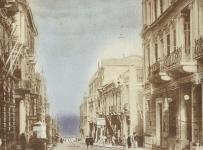 | 1.1 Candia under the Venetian occupation | |
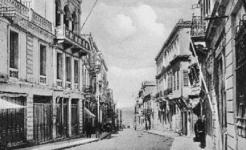 | 1.2 The public buildings | |
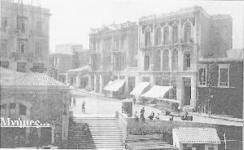 | 1.2.1 Ruga Magistra (Maistra) | |
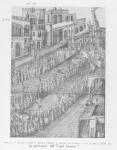 | 1.2.2 The Ducal Palace | |
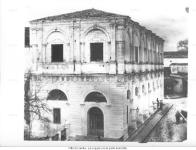 | 1.2.3 The Venetian Loggia | |
 | 1.2.4 The Warehouse for the Cereals (Fondaco) | |
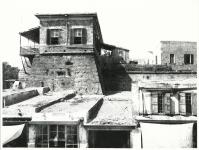 | 1.2.5 The Gate “Voltone” | |
 | 1.3 The orthodox churches | |
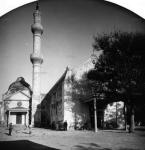 | 1.3.1 St. Catherine of Sinai | |
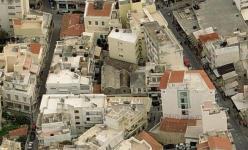 | 1.3.2 Saint Anastasia | |
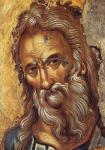 | 1.3.3 The Church of St. Mathew, dependency of Sinai | |
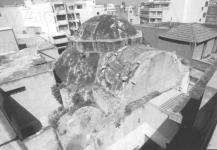 | 1.3.4 St. Onouphrios | |
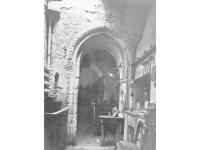 | 1.3.5 Virgin of the Angels (Santa Maria degli Angelis in Beccharia) | |
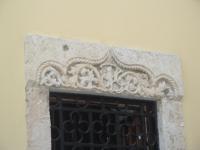 | 1.3.6 Church of the Virgin Pantanassa (southern aisle of the old Metropolis / old church of St. Menas) | |
 | 1.4 The Latin Churches | |
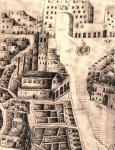 | 1.4.1 The basilica of St. Marc (ducal church) | |
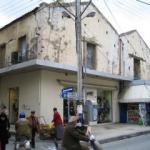 | 1.4.2 The church of Saint John the Baptist | |
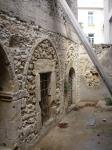 | 1.4.3 Saint Paul of the Servites (Servants of Mary) | |
 | 1.4.4 The monastery of St. Francis of the Franciscans | |
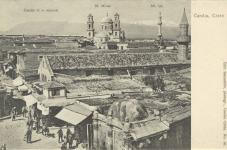 | 1.4.5 Santa Maria di Piazza (Madonina) | |
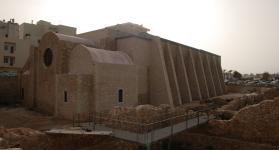 | 1.4.6 The Monastery of St. Peter of the Dominicans | |
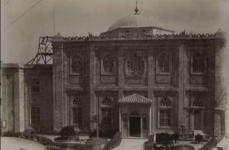 | 1.4.7 The Church of St. Titus (Latin Archdiocese) | |
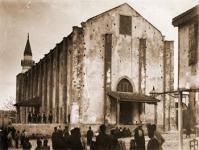 | 1.4.8 The church of San Salvatore | |
 | 1.5 The fountains and hydraulic works | |
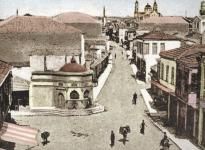 | 1.5.1 The Fountain of the Ruga Panigra (Strata Larga) | |
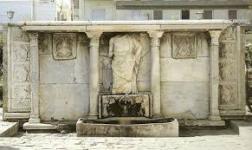 | 1.5.2 The Bembo fountain | |
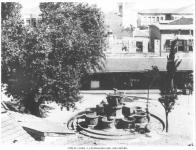 | 1.5.3 The Morozini Fountain | |
 | 1.5.4 The Priuli fountain | |
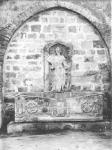 | 1.5.5 The Sagredo fountain |